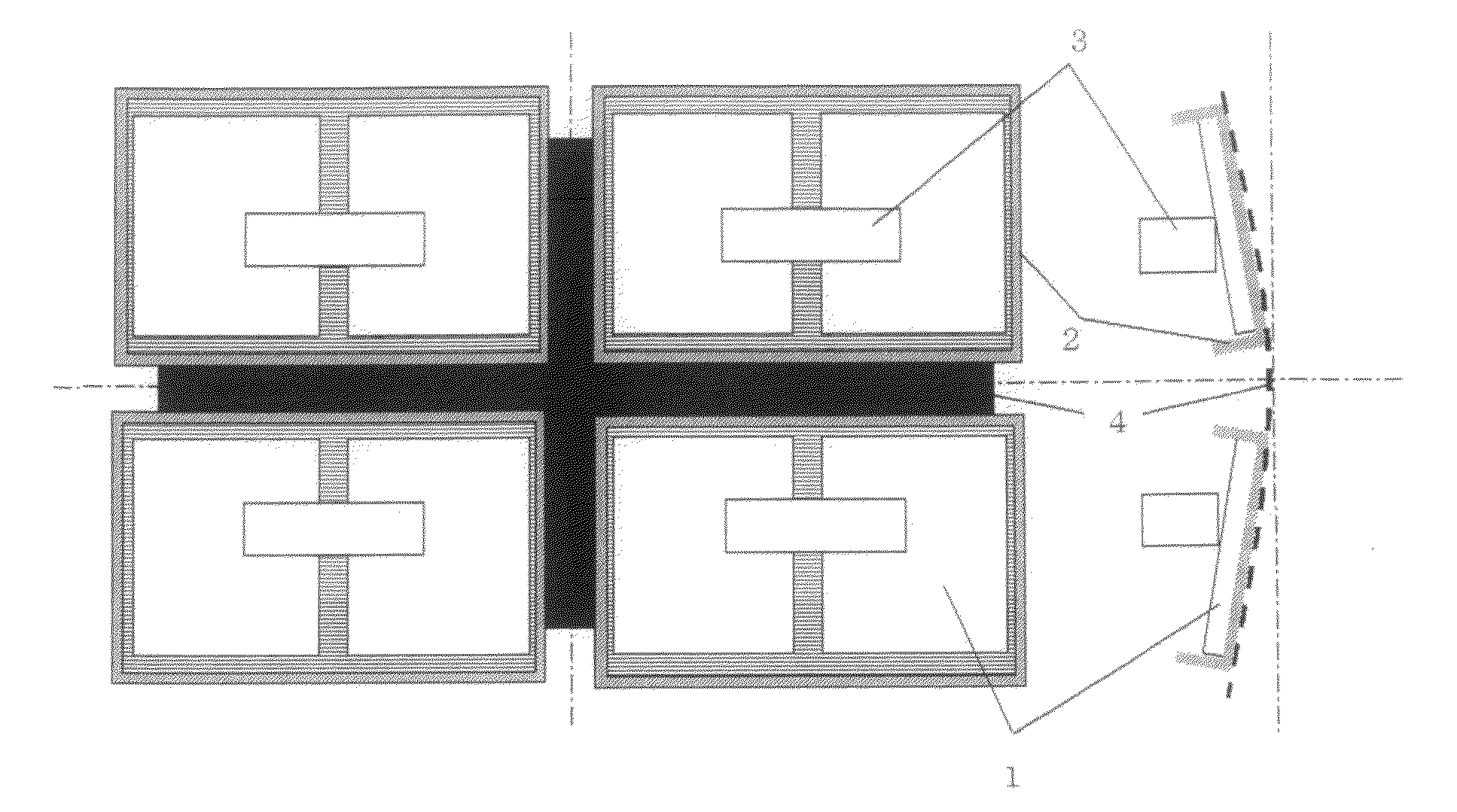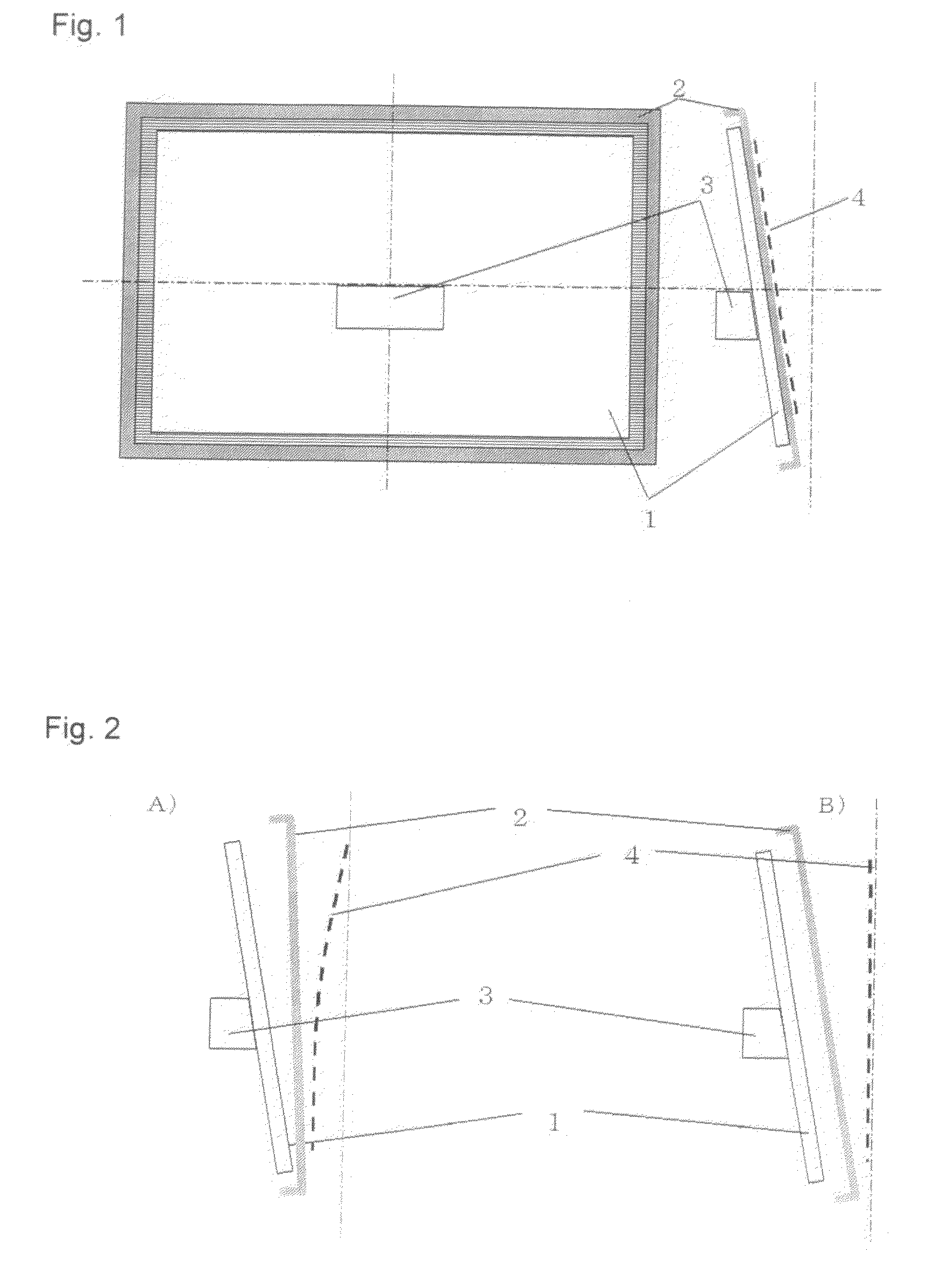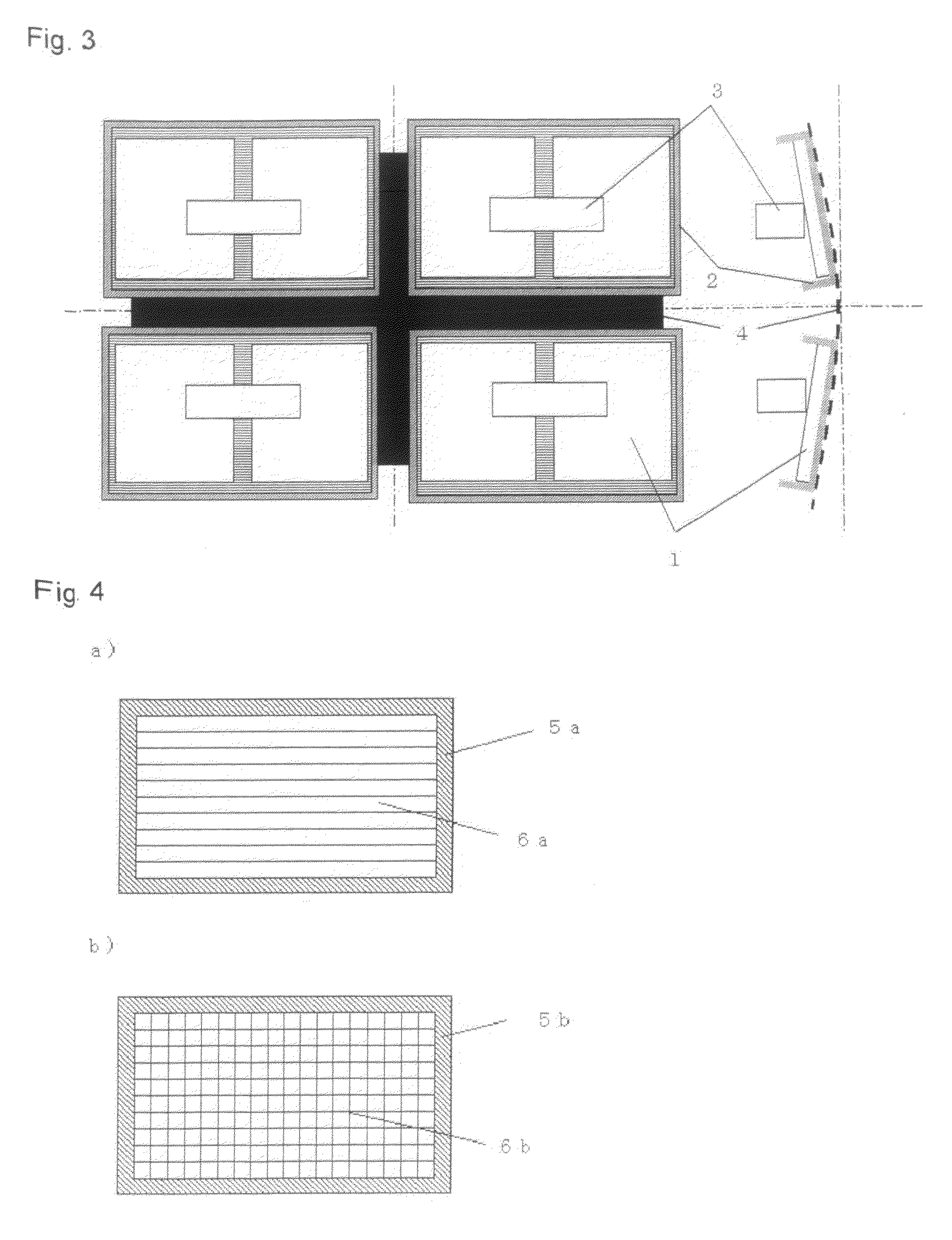Conveying Device Using Electrostatic Adsorbing Plate
a technology of electrostatic adsorption and conveying device, which is applied in the direction of mechanical conveyors, thin material processing, article separation, etc., can solve the problems of increasing the cost of devices in comparison to electrostatic adsorption devices of constant applied voltage types, affecting the separation accuracy of articles, and affecting the smooth operation of articles, etc., to achieve the effect of reducing the electrostatic adsorption force, quick separation of articles, and improving positioning accuracy
- Summary
- Abstract
- Description
- Claims
- Application Information
AI Technical Summary
Benefits of technology
Problems solved by technology
Method used
Image
Examples
example 1
[0031]The electrostatic adsorbing plates were arranged at an inclination angle of 10° relative to a horizontal plane and a peeling plate (FIG. 4a)) was fabricated by arranging 200 μm dia. nylon monofilament yarn in a lateral stripe shape into a percentage of voids of 95%, then was attached to a stainless steel frame having 300 mm×600 mm apertures. When voltage of 3,000V was applied to the electrostatic adsorbing plates, an adsorbing force was found to be 5 kgf. A conveyance test was conducted using this conveying device, the results of which are shown in Table 1.
example 2
[0032]Using a conveying device of the same construction as in Example 1, voltage of 1,000V was applied to the electrostatic adsorbing plates to find that an adsorbing force was 3 kgf. Under this condition there was conducted a conveyance test, the results of which are shown in Table 1.
example 3
[0033]The electrostatic adsorbing plates were arranged at an inclination angle of 5° relative to a horizontal plane and a peeling plate was fabricated by arranging 200 μm dia. polyester monofilament yarn in a lattice shape into a percentage of voids of 90% (FIG. 4b)), then was attached to a stainless steel frame having 300 mm×600 mm apertures. When voltage of 3,000V was applied to the electrostatic adsorbing plates, an adsorbing force was found to be 5 kgf. A conveyance test was conducted using this conveying device, the results of which are shown in Table 1.
PUM
 Login to View More
Login to View More Abstract
Description
Claims
Application Information
 Login to View More
Login to View More - R&D
- Intellectual Property
- Life Sciences
- Materials
- Tech Scout
- Unparalleled Data Quality
- Higher Quality Content
- 60% Fewer Hallucinations
Browse by: Latest US Patents, China's latest patents, Technical Efficacy Thesaurus, Application Domain, Technology Topic, Popular Technical Reports.
© 2025 PatSnap. All rights reserved.Legal|Privacy policy|Modern Slavery Act Transparency Statement|Sitemap|About US| Contact US: help@patsnap.com



